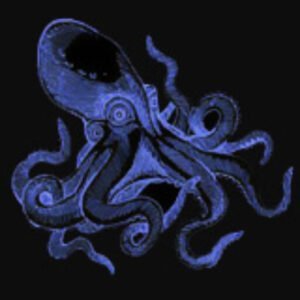
Bootlace worms, named for their deceitfully thin and lengthy appearance, can create these trails as they move through the sandy substrate. Imagine tracing your finger through icing on a cake; that’s how these worms carve paths in the sand. Knowing how to identify these trails not only adds a layer of appreciation for the environment but also sparks curiosity about the creatures that inhabit it. Let’s explore how to spot and understand these unique markers left behind in the wet sand.
What Are Bootlace Worms?
Bootlace worms belong to the *Lineus* genus and are known for their extreme length; they can stretch up to 10 meters in some cases! These worms may be long, but they’re not particularly thick, leading to their nickname. They thrive in marine environments, often lurking in sandy or muddy substrates along coastlines.
These fascinating creatures play a significant role in the ecosystem. Bootlace worms help decompose organic matter and serve as food for various predators. Despite their appearance—often slimy and uninviting—they contribute to the health of coastal habitats.
So, what does a bootlace worm look like? Picture a long, skinny noodle, often a muddy brown or olive color. Their thin bodies can make them hard to spot, especially when they’re buried beneath the sand or hiding among seaweed.
Understanding Bootlace Worm Trails
When bootlace worms move through the sand, they leave behind trails that can be strikingly intricate. These trails can range from straight lines to winding paths that twist and turn. The patterns depend on how the worm is navigating its environment.
You might be wondering how the trails form. As the worm burrows through the sand, it displaces sediment, which creates a visible trace. Wet sand is the perfect canvas for these trails since it retains shape better than dry sand, making the patterns more pronounced and easier to spot.
Identifying these trails can be a bit like reading a code. Each curve and turn tells a story about the worm’s movements, feeding habits, and perhaps its quest for safety. It’s a beautiful reminder of the life teeming just below our feet.
How to Identify Bootlace Worm Trails
To spot bootlace worm trails, you’ll want to look for a few key features. Here’s what to keep an eye out for:
- Width: Bootlace worm trails are typically very thin, often just a few millimeters wide.
- Pattern: The trails can appear as straight lines or intricate loops, depending on how the worm is moving.
- Surface: These trails are often clearer in wet sand, where the moisture helps the shape hold.
- Location: Search around beach areas or tidal zones, especially after a storm when the sand is freshly disturbed.
Once you’re familiar with these characteristics, spotting the trails can become a fun game. You might begin to see these lines everywhere, adding an exciting layer to your beach walks.
Common Mistakes in Identifying Worm Trails
Many people confuse bootlace worm trails with other natural features. This can lead to a bit of confusion, especially if you’re new to spotting them. Here are some common pitfalls:
- Confusing with Insect Trails: Insects, like ants or beetles, can also leave trails in the sand. However, they tend to be wider and less fluid compared to bootlace worm trails.
- Misidentifying Algal Growth: Some people mistake the trails for algae or seaweed patterns. Unlike worm trails, algae tends to clump together rather than form distinct lines.
- Weather Damage: Wave action, wind, and rain can distort trails, making them hard to recognize. Look for fresh trails in undisturbed areas.
To avoid confusion, try to observe the environment around you. Take note of any additional signs of marine life, such as shells or seaweed, which might help confirm that you’re looking at bootlace worm trails.
Why Bootlace Worm Trails Matter
Understanding and identifying bootlace worm trails is not just a fun outdoor activity; it has ecological implications too. By observing these worms and their trails, we gain insights into the health of coastal ecosystems.
Bootlace worms are indicators of environmental conditions. If the population is thriving, it often means that the habitat is healthy, rich in nutrients, and balanced. Conversely, a lack of visible trails or a decline in their numbers might signal problems, such as pollution or habitat degradation.
From a scientific standpoint, studying these trails helps researchers understand sediment dynamics and the behaviors of marine organisms. It’s fascinating how something as simple as a trail in the sand can contribute to larger environmental knowledge!
Exploring Further: Other Marine Life Trails
While bootlace worms are unique, they’re not the only creatures that leave trails in the sand. By broadening your exploration to include other marine life, you can enrich your experience even more. Here are a few other common trails to look out for:
- Crab Tracks: Look for larger, wider trails with distinct imprints, indicating a crab’s movement.
- Fish Prints: These can show up as patterns made by fish swimming near the surface.
- Snail Trails: Snails leave behind slimy trails, often leading to their hiding spots in rocks or under sand.
When you start recognizing these different trails, your beach walks can transform from a simple stroll to an engaging scavenger hunt!
Final Thoughts on Bootlace Worm Trails
Finding bootlace worm trails in wet sand can turn an ordinary day at the beach into an exciting exploration of nature. Learning to identify these trails not only deepens your appreciation for marine life but also adds a layer of understanding to the ecosystem’s delicate balance.
So next time you spot those squiggly lines in the sand, take a moment to pause and reflect on the journey of the bootlace worm. Who knew that a simple walk along the coast could lead to such fascinating discoveries? Enjoy the adventure and happy trail spotting!
